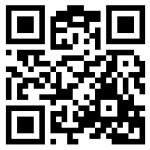Science and medicine have changed drastically over the past few thousand years. However, many people may not realize just how old certain treatments and exams are. Chief among these are exams, which have been dated back to over 2,000 years ago. Because of that, there’s a significant difference between what a typical eye exam was like back then compared to now, and it’s not just in terms of an ophthalmoscope. Having said that, there are a few key ways that eye exams have evolved over the past few centuries to become what we know of today.
Early Eye Exams
Some studies have suggested that eye science dates back to as early as 2,000 BC. This would pre-date the likes of Christianity and many other types of science. This belief is due to the finding of many writings that refer to patients having eye diseases that can be treated by a physician. As expected, however, the treatments that were used in eye exams were relatively medieval and weren’t overly effective, especially compared to modern day treatments. Blades and lances were often used to treat any perceived diseases, as well as a variety of other primitive tools.
The Evolution Of Eye Science
Much of what we may now refer to as modern eye science can be traced back to around 434 BC and the scientist Aristophanes. However, there was constant evolution which eventually led to Euclid writing in 280 BC about the visual cone and light traveling in straight lines. This would be a significant breakthrough in the eye science world. Hundreds of years later, this would lead to Ptolemy being able to measure angles of reflection, which became the basis of modern optometry.
Alcmaeon, an early scientist and predecessor of Hippocrates, is recognized as discovering the optic nerve, paving the way for the evolution of eye science over the next eight centuries. This eventually led to the invention of eyeglasses; according to British scientist Sir Joseph Needham. They were invented in China but were first observed by Marco Polo in his travels. Johannes Kepler and Christoph Scheiner helped to deepen the knowledge base in new optical observations during the early 1600s. These advancements would eventually lead to Benjamin Franklin inventing bifocal lenses in 1784.
Modern Eye Exams
It was only during the 19th century that the understanding of the anatomy of the eye began to come into shape. One of the first notable advancements in the early 1800s was when Thomas Young became the first to measure astigmatism; that advancement led to George Biddell Airy becoming the first person to treat the condition with a lens in 1827. However, it was only during the early part of the 20th century that the advancement of eye science began to get more popular. Much of this interest can be attributed to the Australian Optometrical Association.
In 1918, the group came up with an educational syllabus to help people learn the practice. By doing so, the company was able to help train a significant amount of eye surgeons and practitioners while also inspiring more schools to be opened around the world. With this, more and more advancements in the field became increasingly common. The standard to which the group trained their students can be traced back to 1888. This was when Edmund Landolt introduced the current international standard for eye exams and tests. The standards were so high that the vast majority of them are still in use today.
These developments help lead to the International Council of Ophthalmology creating a new 20/20 vision standard; this was one of the very few major changes to Edmund Landolt’s standards and is still in use several decades later. Some of the most significant changes in these decades involve the growing use of lasers in eye correction and surgery. The first of these lasers to be used to help correct vision were done in 1988 and marked a significant milestone for the treatment process.
In the United States, however, laser treatments were relatively slow to come into practice and were only approved for use here in 1995. This is in contrast to Europe where many advancements had been made in the niche since 1990, which led to the United States playing catch-up to many treatments over the next few years. This leads us to where we are today with the evolution of eye surgery.







Speak Your Mind